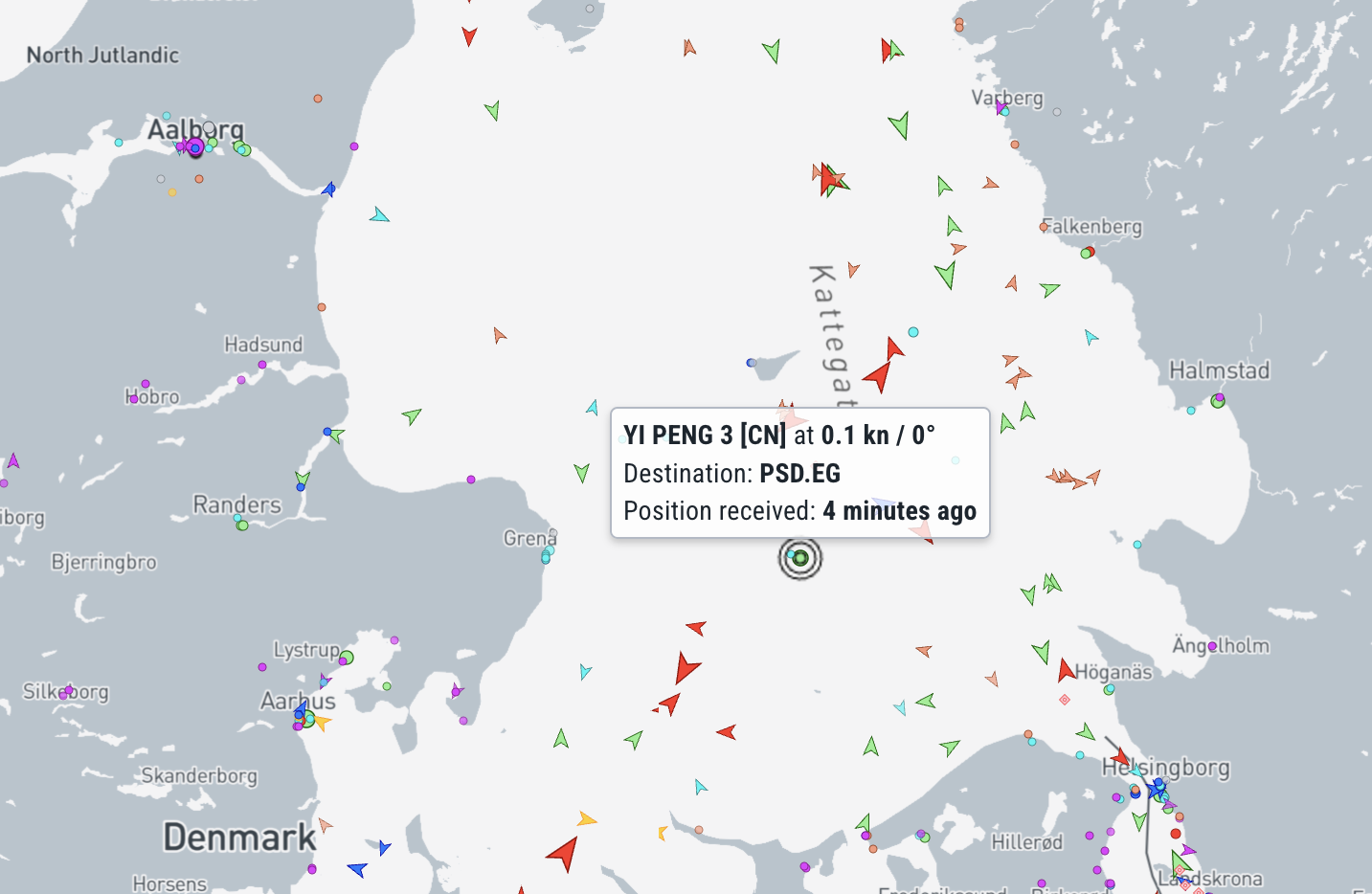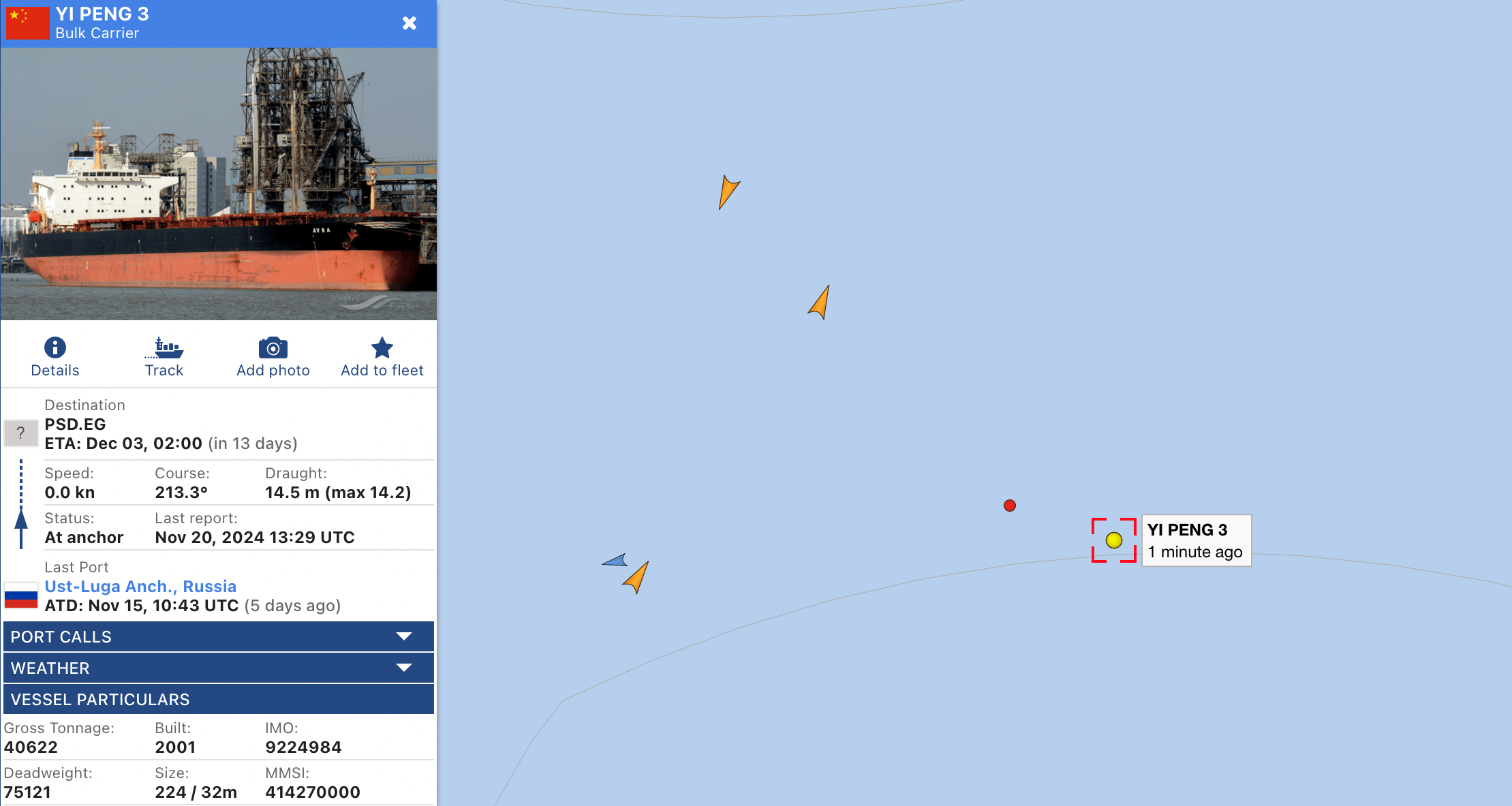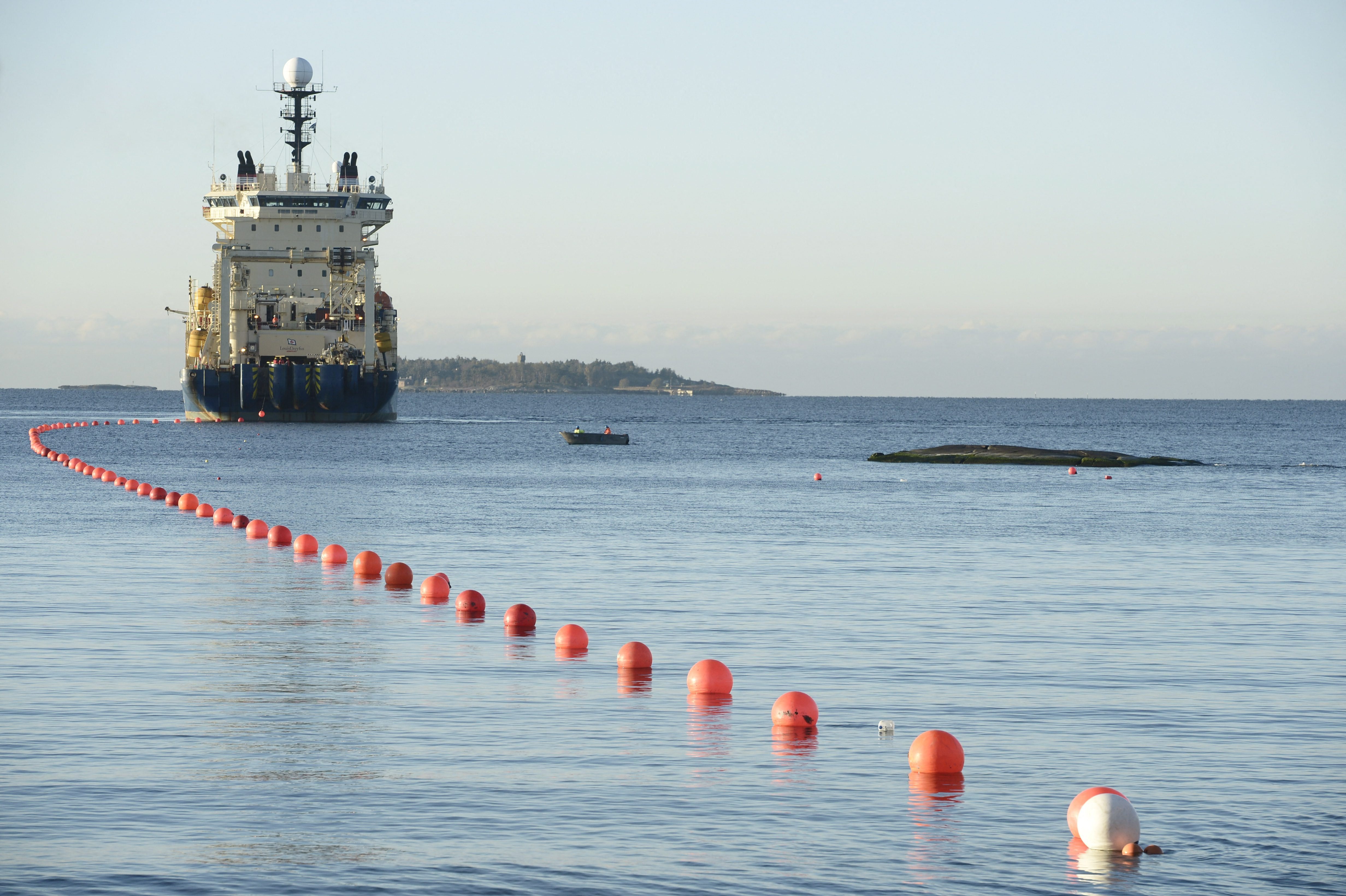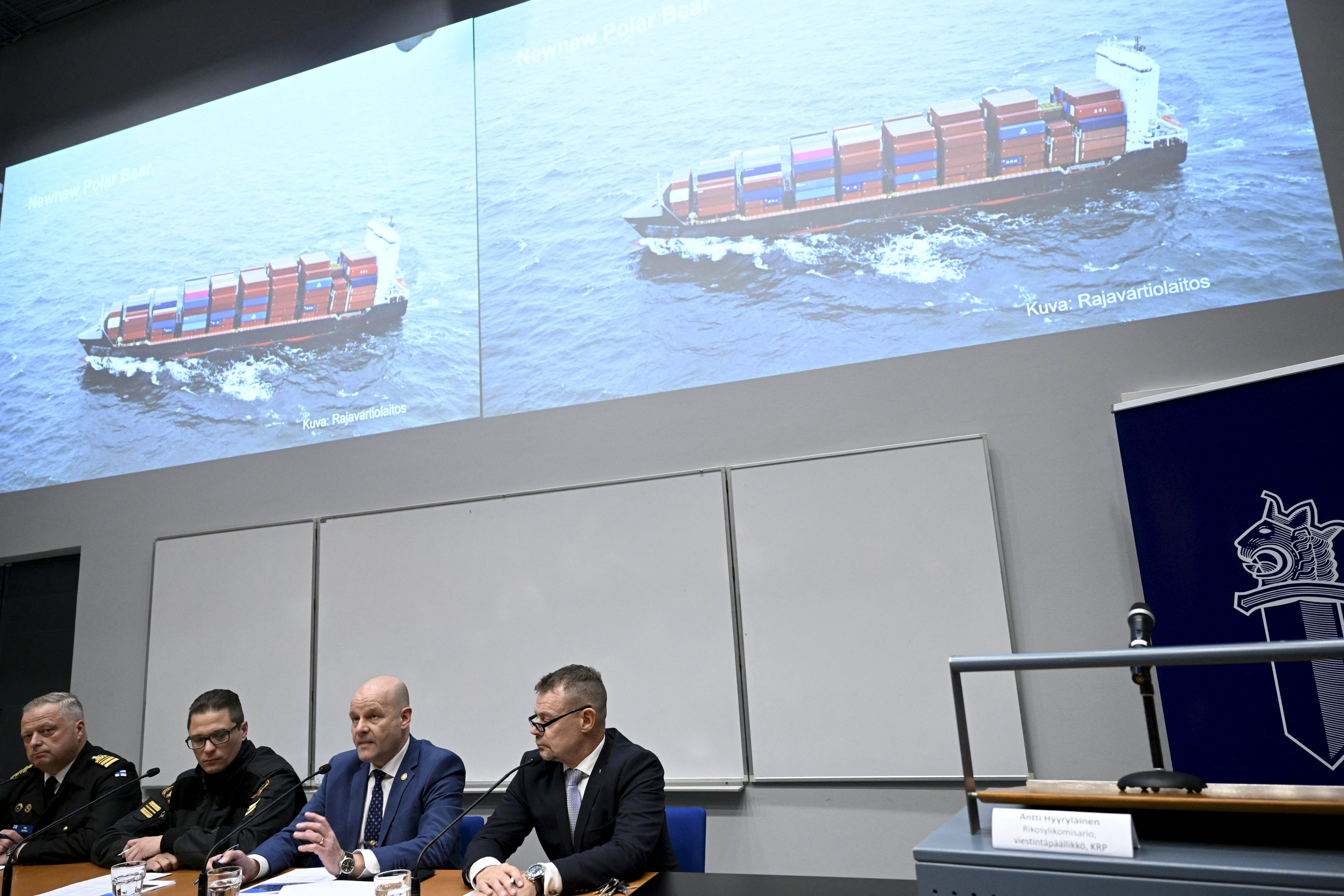Denmark has confirmed it’s monitoring the Chinese cargo vessel at the center of allegations surrounding recent damage to two communication cables in the Baltic Sea. Yesterday, Germany said that the damage was most likely the result of sabotage, while the Chinese ship, the Yi Peng 3, was identified as operating in the vicinity of the cables when the incidents occurred. You can read our previous reporting here.
In a statement on X today, the Danish Armed Forces said: “We are present in the area near the Chinese ship Yi Peng 3. The Danish Defense currently has no further comments.”
On MarineTraffic, an aggregator that provides real-time information on ship movements, the Yi Peng 3 can be seen anchored in the Kattegat as of 1:00 p.m. GMT today, having exited the Baltic via the Danish Straits. In close proximity to the Chinese cargo ship was the Rota (P525), a Royal Danish Navy Diana class patrol boat, also anchored.


Another Royal Danish Navy warship, the Thetis class ocean patrol vessel Hvidbjørnen, was also noted heading toward the scene, underway in the northern part of the Kattegat earlier today.
The Danish Armed Forces have so far not said whether or not a boarding party has been put on the Yi Peng 3.

According to the Polish website Defence24.com, the Rota first “detained” the Chinese bulk carrier yesterday evening, Nov. 19. At this point, the Yi Peng 3 was in Danish territorial waters, sailing in the Danish Straits at the exit of the Great Belt.
“After a few hours, another vessel HDMS Søløven, which is specialized for underwater work, reached both vessels,” the same report added.
The Chinese vessel had departed the Russian port of Ust-Luga, in the Leningrad region, close to the Estonian border, on Nov. 15 and had been scheduled to sail to Port Said, Egypt, where it was originally due to arrive on Dec. 3.
The Yi Peng 3 is 224 meters (735 feet) long, with a beam of 32 meters (105 feet) and it has a gross tonnage of 40,622 tons.
As for the damaged cables, you can read more about the background of those incidents in our previous report. In summary, the first of these is the 135-mile-long BSC cable between the Swedish island of Gotland and Lithuania, which was damaged around 8:00 a.m. GMT last Sunday. The second is C-Lion1, a 746-mile-long cable between Helsinki and the German port of Rostock, put out of action around 2:00 a.m. GMT on Monday.
Both of these are fiber-optic communication cables, running along the Baltic seabed.


Already yesterday there were suggestions that the Yi Peng 3 might somehow be involved in the incidents.
Based on publicly available ship-tracking data, the Yi Peng 3 appears to have passed overhead both of the cables around the same time incidents of damage were first reported.
According to the German newspaper Kieler Nachrichten, on Monday, when the damage to the C-Lion1 cable was confirmed, the Yi Peng “stopped, drifted, and sailed two circles in the sea area south of Öland for almost 90 minutes.”
The Chinese cargo vessel was seen to slow down as it passed the cables, based on data gathered by auonsson, an open-source intelligence analyst.
“The speed of cargo ship Yi Peng 3 was affected negatively as she passed the two Baltic Sea cable breaks C-Lion 1 and BSC,” auonsson wrote on the social media platform Bluesky. “Before the incidents, she held normal speeds. After stopping and drifting for 70 minutes she again held normal speeds. By this time the two cables were broken.”
“Headwinds could play a role in slowing Yi Peng 3 down, but I don’t believe this to be the case. The changes in speed are much more significant than the changes in wind speed,” auonsson added.
So far, no official evidence has been presented that ties the Yi Peng 3 to these incidents, although, as we shared previously, there is a notable precedent.
In October last year, the Balticconnector gas pipeline running between Estonia and Finland was damaged. The Finnish National Bureau of Investigation later identified the culprit as the Chinese container ship Newnew Polar Bear, which had dropped its anchor, dragging it along the seabed.

The Newnew Polar Bear had earlier been spotted with one of its anchors missing and the same type of paint on the anchor could be matched to that on the damaged pipeline.
Chinese authorities later admitted that the Newnew Polar Bear was to blame but stated that it was an accident.
However, the rapid departure of the Newnew Polar Bear from the Baltic last October fueled suspicions that the pipeline damage might have been an act of sabotage.
With that in mind, it would make sense for the Danish authorities to investigate the Yi Peng 3 before it transits into international waters and continues its journey.
For now, we will have to wait and see whether the Yi Peng 3 is being examined for any signs of damage that might be consistent with snagging the two communications cables, but this would certainly seem like a possible line of inquiry for the Danes.
If the Yi Peng 3 is found to have been responsible for the damage, questions will very likely be asked about how that could have happened — especially since two cables in separate locations were affected. Moreover, with the precedent of the Newnew Polar Bear incident last year, there will likely be concerns that this could be evidence of some sort of broader, deliberate campaign in the highly strategic Baltic region.
We will update this post if more information becomes available.
Contact the author: thomas@thewarzone.com
